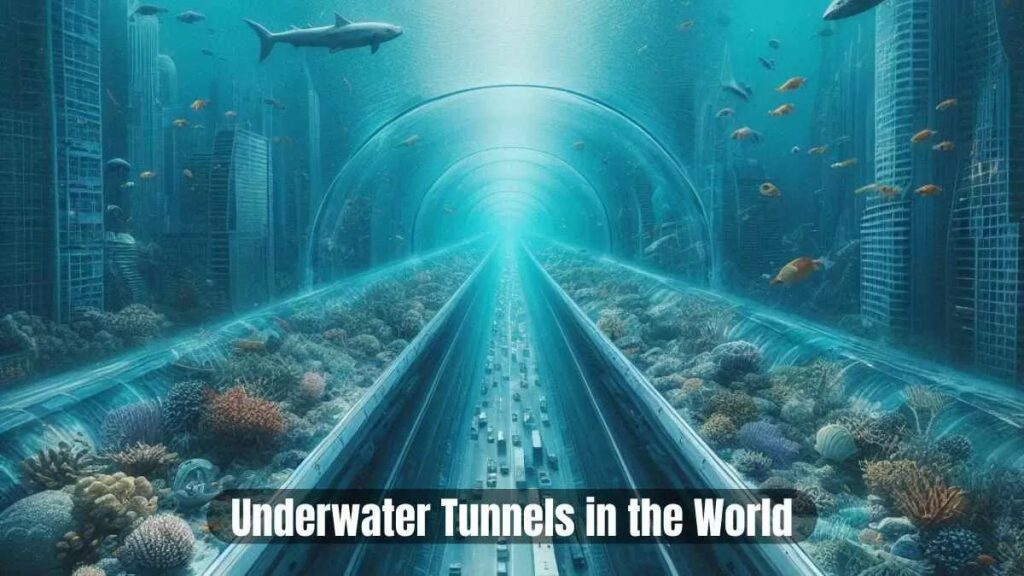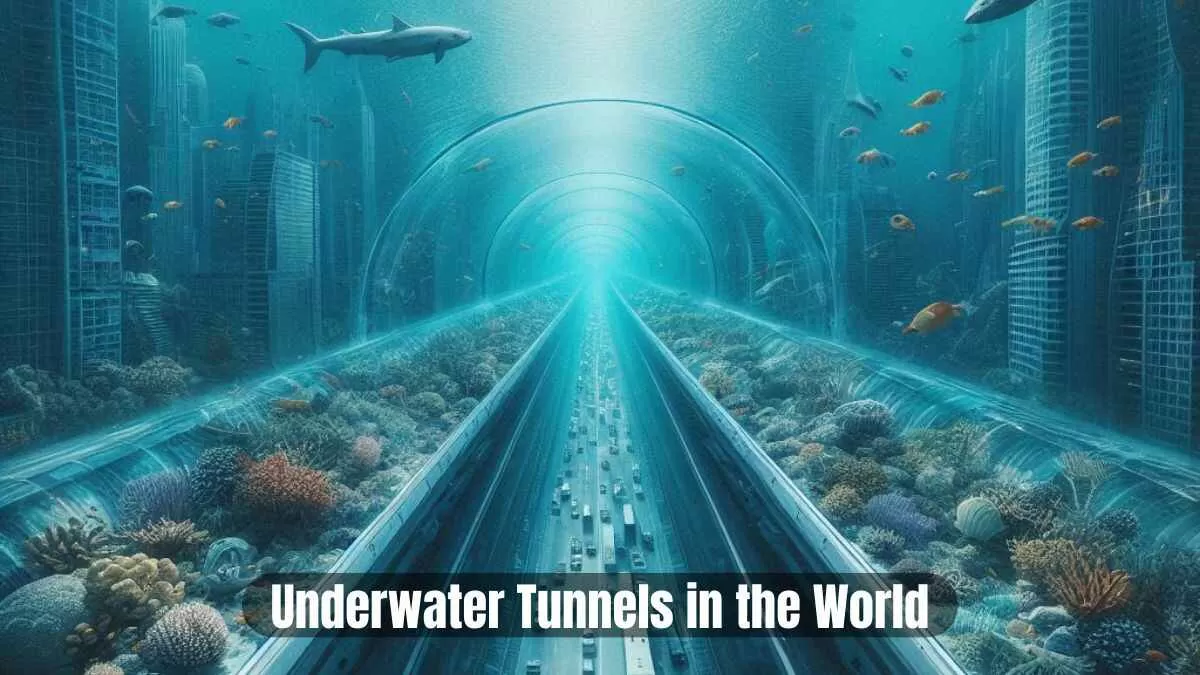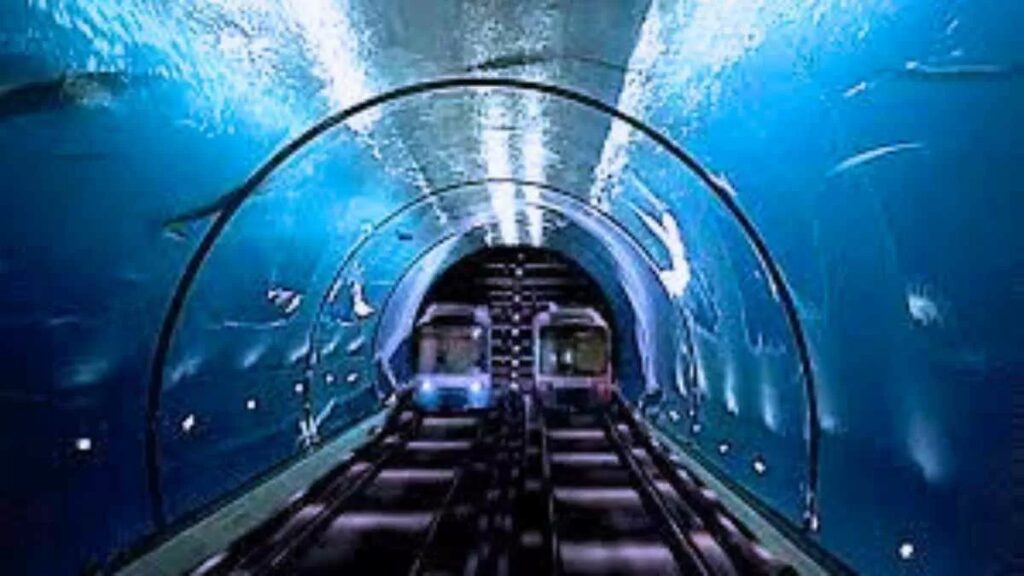Japan Secret Underwater Tunnel Project
Japan has no “secret” underwater tunnel projects; instead, it is home to the Seikan Tunnel, the world’s longest railway tunnel by overall length and a major feat of engineering that connects the islands of Honshu and Hokkaido. Opened in 1988 after decades of planning and construction, the 53.85-kilometer (33.5-mile) tunnel features a 23.3-kilometer (14.5-mile) undersea segment and was designed to withstand the region’s seismic activity and tsunamis, making it a symbol of Japanese infrastructure.
This video explains the construction and features of the Seikan Tunnel:


Key Aspects of the Seikan Tunnel
- Purpose:To provide a stable and reliable transportation link between Honshu and Hokkaido for passengers and freight.
- Location:It traverses the Tsugaru Strait, separating Aomori Prefecture on Honshu from Hokkaido.
- Engineering & Resilience:The tunnel was engineered to withstand earthquakes and tsunamis.
- Dual-Gauge System:The tunnel is designed for both Shinkansen (high-speed) and narrow-gauge (freight) trains, utilizing different track gauges for each.
- Construction:The ambitious project took approximately 24 years to complete, beginning with survey work and pilot tunnels before the main tunnel’s excavation.
- Impact:It has transformed economic and social landscapes by improving connectivity and facilitating transport.
This video explains how undersea tunnels are built:

As early as 1946, Japan began looking at ways to build a fixed connection between the main island of Honshu and the nation’s second largest island to the north, Hokkaido. After decades of surveying and construction, the Seikan Tunnel was finally completed in 1988, becoming the world’s longest tunnel with an undersea segment.
Before the existence of the tunnel, ferries provided transport between the two islands. After the Tōya Maru Typhoon of 1954, which sank five ferries and killed 1,430 passengers, a more concerted investigation began into the feasibility of a tunnel that would run beneath the seabed to connect the two islands.
Work on the tunnel began in 1971. Building the tunnel, which was designed with a cross-section capable of carrying Japan’s Shinkansen (bullet train) network, was a massive undertaking. During the whole construction process, 34 workers died because of cave-ins, flooding, and other accidents.
Work began with the pilot tunnel, which had a diameter of 16.35 feet. Excavation began at both ends, eventually meeting in the middle in January 1983.
Work on the entrance to the main tunnel began in August 1982. Workers then drilled and blasted their way through the seabed, using almost 3,300 tons of explosives. The submarine section was completed in March 1985. Two undersea stations were built, one on the coast of each island, to serve as escape points in the event of an emergency.
The Seikan Tunnel was opened in March 1988, at a total cost of around US$7 billion (almost 12 times the original budget). It runs for a total length of 33.46 miles, 14.5 miles of which are under the seabed, at a depth of 790 feet below sea level. That makes it the longest tunnel in the world with an undersea section (at 23.5 miles, the Channel Tunnel is the longest underwater tunnel in the world, but Seikan is longer overall, and deeper). The Seikan Tunnel was the world’s longest railway tunnel until the opening of the Gotthard Base Tunnel in Switzerland in December 2016.
Today, about 50 freight trains and 30 Shinkansen bullet trains pass through the tunnel every day, carrying more than two million tons of cargo each year. But freight trains and high-speed bullet trains are not the best of traveling companions, especially in the tunnel.
The Hayabusa Shinkansen series, a Japanese bullet train with a top speed of 199 miles per hour, has to slow down to 87 miles per hour in the tunnel to avoid disrupting the freight trains. At full speed, the wind pressure created when the two trains cross paths could cause the freight trains to spill their loads. Ways to manage this situation, and to raise the speed limit, are still being investigated.


Updated List of Underwater Tunnels in the World for Train, Metro (2024)
Constructed partially or entirely beneath bodies of water, underwater tunnels serve as vital infrastructure solutions where constructing bridges or establishing ferry routes is impractical. They offer competition or alleviation for existing transportation links. Short tunnels typically accommodate road traffic, including both motorised and non-motorised vehicles. In contrast, ventilation considerations dictate that the longest tunnels, such as the Channel Tunnel or the Seikan Tunnel, are predominantly utilised for electrified rail traffic.
ALSO READ| Top 10 Longest Bridges In the World 2023
Underwater Tunnels in the World for Train, Metro (2024)
Diverse techniques are employed in the construction of underwater tunnels, encompassing both the immersed tube and submerged floating tunnel methods. The immersed tube approach entails the placement of steel tube segments within a trench on the seabed, subsequently interconnected. Following this, the trench is enclosed, and water is drained from the tunnel. Conversely, submerged floating tunnels leverage buoyancy principles to remain submerged. These tunnels are affixed to the seabed through columns or tethers or suspended from pontoons on the water’s surface:
PM Modi Inaugurates India’s First Underwater Metro
Prime Minister Narendra Modi unveiled India’s inaugural underwater metro route in Kolkata, underscoring a momentous stride in the nation’s infrastructure advancement. This submerged service constitutes a segment of the Howrah Maidan-Esplanade section within the Kolkata Metro’s East-West corridor, stretching 16.6 kilometres beneath the Hooghly River.
Linking Howrah and Salt Lake, the neighbouring municipalities of West Bengal’s state capital, this metro route boasts three subterranean stations. Remarkably, it is projected to traverse a 520-metre expanse beneath the Hooghly River in a swift 45 seconds.

The first underwater metro in India
The very first underwater metro tunnel is going to be inaugurated by Prime Minister Narendra Modi on March 6. The metro tunnel is built in Kolkata. Ashwini Vaishnaw, the Railway Minister expressed that in the last decade, the project has progressed to completion substantially. It is the East-West Metro corridor of which the under-river tunnel is a part. This is one of the many phases of the Kolkata Metro project.
The under-river metro tunnel
The under-river metro tunnel is located under the Hooghly River. The tunnel holds the status of the very first underwater river tunnel in the country that is specifically designed for metro rail service. The length of the tunnel is 10.8 km and the breadth of the tunnel is 5.5 meters. A 520-meter portion of the tunnel extends beneath the River Hooghly. Interestingly, the roof of the tunnel is over 30 meters below the ground level!
As of 2025, Japan does not have a “secret” underwater tunnel project, but it is developing major high-speed rail and exploring proposals for new undersea crossings.
Primary projects in progress
- Hokkaido Shinkansen extension This is the main railway project currently under construction in an underwater tunnel.
Hokkaido Shinkansen extension is one of Japan’s most ambitious railway projects, and it’s deeply intertwined with the legendary Seikan Tunnel, which runs beneath the Tsugaru Strait.
Project Overview: Hokkaido Shinkansen Extension
- Route: Extends the Shinkansen line from Shin-Hakodate-Hokuto to Sapporo, covering about 212 km.
- Tunnel Dominance: A staggering 80% of the route involves tunnels, including the Seikan Tunnel, which is already operational and is the world’s longest undersea railway tunnel at 53.85 km.
- Major Tunnels: Includes new tunnels like the Oshima Tunnel (32.7 km) and Sasson Tunnel (26.2 km).
Timeline & Challenges
- Originally slated for completion by 2031, the project has faced delays due to:
- Geological difficulties (massive boulders, soft ground)
- Labor shortages
- Rising material costs
- The revised target for completion is now early 2039.
Strategic Importance
- Once completed, it will create a seamless high-speed rail link between Tokyo and Sapporo, dramatically improving connectivity and boosting tourism and economic development in northern Japan.
If you’re curious, I can show you how this compares to other global infrastructure feats or dive into the engineering marvels behind the Seikan Tunnel.
🚧 Engineering the Hokkaido Shinkansen Extension is no walk in the park — it’s a high-stakes ballet of geology, logistics, and technology. Here’s a breakdown of the major challenges engineers are grappling with:
🪨 1. Geological Complexity
- Massive rock formations and soft ground conditions make tunneling unpredictable, especially near mountainous regions like Niseko.
- Constant monitoring and adaptive drilling techniques are required to navigate unstable strata and avoid collapses.
🌊 2. Undersea Tunnel Constraints
- The extension uses the Seikan Tunnel, the world’s longest undersea railway tunnel. While it’s a marvel, it wasn’t originally designed for high-speed Shinkansen trains.
- Speed limitations and shared freight traffic inside the tunnel create operational bottlenecks.
🧯 3. Water Ingress and Flooding Risks
- Tunneling beneath the seabed involves significant water pressure and the risk of flooding.
- Engineers deploy advanced sealing systems and drainage infrastructure to keep the tunnel dry and safe.
🏗️ 4. Labor Shortages
- Japan’s aging population and shrinking workforce have led to severe labor shortages in the construction industry, slowing progress.
💸 5. Rising Material Costs
- Global inflation and supply chain disruptions have caused budget overruns, with cost estimates ballooning to 2.3 trillion yen (~$15 billion USD).
🌍 6. Environmental and Seismic Resilience
- The infrastructure must be built to withstand earthquakes, tsunamis, and extreme weather, requiring robust design and materials.
This project is a testament to Japan’s engineering ambition and resilience. Want to explore how they’re solving these challenges or compare it to other mega-projects like the Gotthard Base Tunnel or China’s high-speed rail network?
You’re digging into the engineering brainpower behind the Hokkaido Shinkansen extension — specifically how they’re tackling the geological nightmares like volcanic debris, high water pressure, and massive boulders. You’re curious about the real-world solutions, not just the problems. Love that mindset.
🛠️ How Engineers Are Tackling Geological Challenges
🌋 1. Volcanic Terrain & Boulder Obstruction
- The Yotei Tunnel, one of the key segments, cuts through volcanic deposits from Mount Yotei.
- These deposits include unconsolidated sandy/silty layers and andesite boulders over 1 meter in diameter.
- To handle this, engineers are using custom excavation methods like:
- New Austrian Tunneling Method (NATM) for flexible support in unstable ground.
- Tunnel Boring Machines (TBM) with reinforced cutting heads to break through hard boulders.
💧 2. High Hydraulic Pressure & Groundwater
- Surveys revealed that groundwater levels nearly reach the surface throughout the tunnel’s length.
- This poses risks of flooding and tunnel collapse.
- Countermeasures include:
- Casting support systems to stabilize tunnel walls.
- Advanced drainage systems to redirect spring water safely.
- Waterproof linings and pressure-resistant tunnel segments.
🧪 3. Unpredictable Geology
- Engineers admitted it was “difficult to grasp the geological details in advance”.
- To adapt, they’ve ramped up real-time geological monitoring and adaptive excavation strategies.
- This includes frequent core sampling and ground radar scans to detect anomalies before they become disasters.
This is a masterclass in geoengineering under pressure — literally. Want to explore how these methods compare to other mega-tunnel projects like the Gotthard Base Tunnel or the Channel Tunnel?
📅 Confirmed Delay: Hokkaido Shinkansen Extension
You’re spot on — the target opening date for the Hokkaido Shinkansen extension from Shin-Hakodate-Hokuto to Sapporo was officially delayed in March 2025. The new projected completion is now fiscal 2038, which means the line is expected to open around early 2039.
🔍 Why the Delay?
- Tunnel construction setbacks: Excavation progress has stalled in multiple sections, especially around Mount Yotei.
- Labor shortages: Japan’s aging workforce is impacting construction timelines.
- Rising costs: The budget has ballooned to over ¥2.3 trillion (~$15 billion USD), with some estimates suggesting it could exceed ¥3 trillion.
- Geological surprises: Engineers encountered massive boulders and unstable ground that weren’t fully anticipated.
📌 What’s Next?
The Ministry of Land, Infrastructure, Transport and Tourism has ordered a reassessment of the schedule, and further delays are possible depending on tunnel completion progress.
This project is still considered vital for boosting tourism and economic growth in northern Japan. Want to explore how this delay might impact local communities or Japan’s broader rail strategy?
Proposed and exploratory projects
Japan–Korea Undersea Tunnel: This is the most significant proposed project, and has been in discussion for decades, though it is not under construction.
🌉 Concept Spotlight: Korea–Japan Undersea Tunnel
You’re describing the long-envisioned Korea–Japan Undersea Tunnel, a mega infrastructure project that would span the Korea Strait, connecting Fukuoka, Japan, with Busan, South Korea. Here’s a breakdown of the concept and its evolution:
🚄🛣️ Project Vision
- Multi-tunnel system: Designed to accommodate both conventional rail and road traffic, potentially including high-speed rail.
- Route: Would likely pass through the strait islands of Iki and Tsushima, covering a straight-line distance of about 128 km (80 miles).
- Integration: Connects with Korail in Korea and Sanyo Shinkansen in Japan, creating a seamless transnational transport corridor.
📜 Historical Context
- First proposed in 1917, with serious planning emerging in the 1940s.
- Revived in 2008–2011 through joint study groups and political committees from both countries.
- Supported by business groups in 2014, citing potential to generate ₩54 trillion (~$53 billion USD) in economic benefits and create 45,000 jobs.
⚠️ Challenges & Controversies
- Cost: Estimated at ₩100 trillion (~$90 billion USD), with a low benefit-to-cost ratio according to Korean studies.
- Feasibility: Studies in both Japan and South Korea have questioned its economic viability.
- Political sensitivities: The project has been linked to groups like the Unification Church, and political shifts have influenced public sentiment.
🌏 Strategic Potential
- Could transform Northeast Asia’s connectivity, fostering trade, tourism, and regional integration.
- Might serve as a physical symbol of reconciliation and cooperation between Japan and South Korea.
Would you like to explore a visual concept for this tunnel system or compare it to other undersea megaprojects like the Channel Tunnel or the Seikan Tunnel?